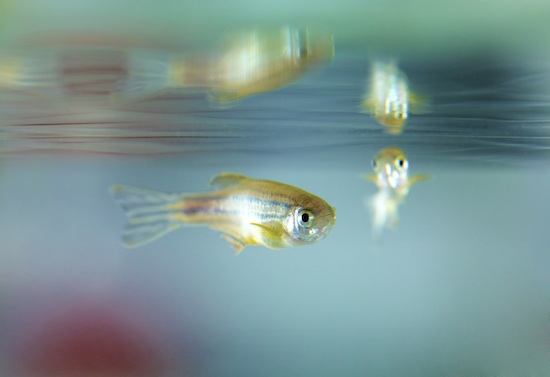Zebrafish Enter Brave New World, Editing DNA Made Frighteningly Simple
Thanks to a pretty well documented and uncomplicated genome, zebrafish are quickly becoming the first choice in genetic engineering models for researchers from a variety of fields. While understanding and tinkering with the DNA of a zebrafish may be easier than it is with other animals, genetic engineering is still a very difficult, time-consuming business. Researchers at the Mayo Clinic, though, have brought that dream closer to fruition, developing a toolkit that makes inserting, activating, and deactivating natural and synthetic genes in the zebrafish genome easier than ever and making it a much more reliable model for human disease.
The researchers used a class of artificial enzymes known as Transcription Activator-Like Effector Nucleases, which go by the sci-fi friendly acronym TALENs. By combining the targeting capabilities of these enzymes with strings of synthetic DNA, researchers can modify the zebrafish genome just few nucleotides at a time, making it possible to really hone in on the difference that having just a few base pairs out of order can make. Accurately creating those small point mutations is extremely important to getting useful models for human disease out of animals.
The research, reported this week in the journal Nature marks the first time scientists have been able to make regular, programmable changes to the zebrafish genome, and relieves researchers of a lot of heavy lifting. Ideally, though, the zebrafish model is just the first one that these newly programmed enzymes will render easier to work with. The hope is that this new toolkit of engineering techniques can be easily translated to other animal models like rats and fruit flies in the near future.
(via Medical Xpress)
- Here is a map of a zebrafish embryo
- Pit viper genetics is a simple, one woman show more often than we thought
- And here are fruit flies engineered to produce synthetic proteins
Have a tip we should know? tips@themarysue.com
